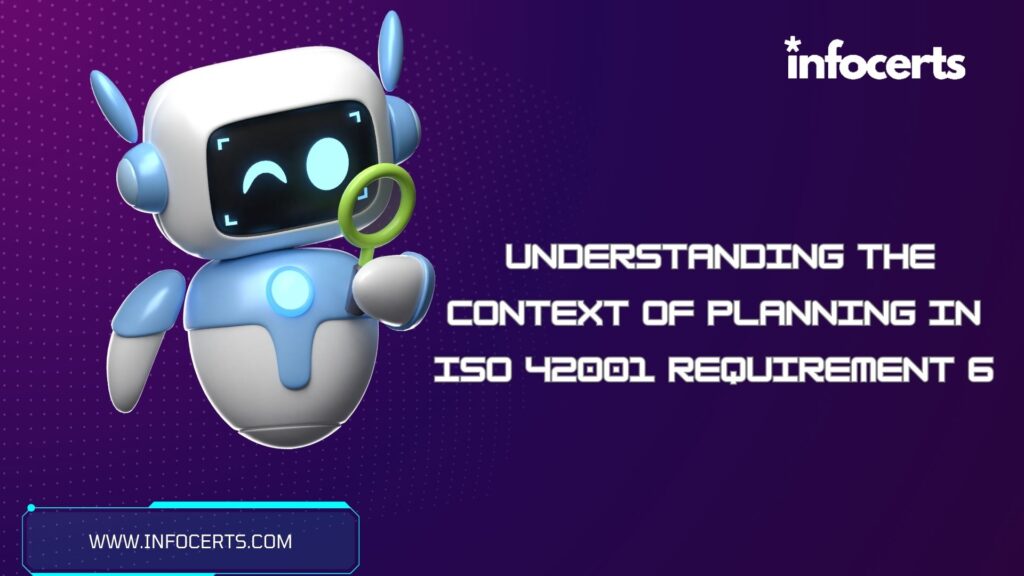Introduction:
ISO 42001 is a comprehensive standard that outlines the requirements for an effective energy management system (EnMS). Within this framework, Requirement 6 focuses on Planning, a crucial aspect for organizations aiming to manage energy effectively. This article delves into the context of planning within ISO 42001, highlighting its significance, implementation strategies, and auditing techniques.
The Significance of Planning:
Planning forms the foundation of any successful Energy Management system. Requirement 6 emphasizes the importance of establishing, implementing, maintaining, and continually improving an energy planning process. This involves setting objectives, targets, and action plans to enhance energy performance and efficiency.
Implementation Strategies:
Implementing Requirement 6 involves several key steps:
- Establishing Context: Organizations need to identify internal and external factors that may impact energy performance. This includes considering legal and regulatory requirements, stakeholder expectations, and market trends.
- Setting Objectives: Clear and measurable objectives are essential for guiding energy management efforts. Organizations should establish targets that align with their overall energy policy and strategic goals.
- Developing Action Plans: Action plans outline the specific steps required to achieve energy objectives and targets. This may include investing in energy-efficient technologies, optimizing processes, and training staff on energy-saving practices.
- Resource Allocation: Adequate resources, including personnel, budget, and technology, should be allocated to support energy planning activities effectively.
Auditing Techniques:
Auditing plays a crucial role in verifying the effectiveness of energy planning processes. Some auditing techniques include:
- Gap Analysis: Conducting a gap analysis helps identify discrepancies between current practices and ISO 42001 requirements. This enables organizations to prioritize areas for improvement.
- Performance Monitoring: Regular monitoring of energy performance metrics allows organizations to track progress towards objectives and targets. This may involve collecting data on energy consumption, efficiency measures, and related KPIs.
- Internal Audits: Internal audits help assess compliance with ISO 42001 requirements and identify opportunities for improvement within the energy planning process.
- External Certification Audits: External certification audits, conducted by accredited certification bodies, verify that an organization’s energy management system meets the requirements of ISO 42001.
Conclusion:
In conclusion, effective planning is essential for achieving energy management objectives and complying with ISO 42001 requirements. By understanding the context of planning, implementing appropriate strategies, and employing auditing techniques, organizations can enhance their energy performance and contribute to Sustainability goals.
FaQs:
- What is ISO 42001?
- Why is energy management planning important?
- What does ISO 42001 Requirement 6 entail?
- How can organizations implement ISO 42001 Requirement 6 effectively?
- What are some auditing techniques for ISO 42001 Requirement 6?
——————————————————————————————————————–
Infocerts, 5B 306 Riverside Greens, Panvel, Raigad 410206 Maharashtra, India
Contact us – https://www.infocerts.com

